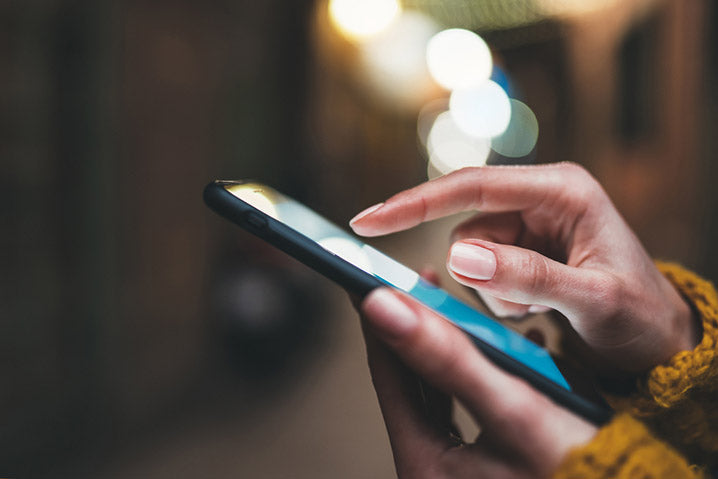
Truth be told, we probably all spend a little too much time staring at our screens. Kids and adults alike should really learn to reduce their screen time. Unfortunately, adults often use screens for work, which can be hard to escape, leading to eye strain at the very least.
But there’s a lot more at risk than dry eyes after a long day. There are more dangers that long-term exposure to blue light can cause. Overexposure to blue light can cause a drop in melatonin levels, which prevents you from getting adequate sleep. Reduced melatonin can also cause insomnia, which can lead to depression. Blue light exposure can also increase the risk of cataracts and other macular degeneration, as well as cancer. Staring at a blue light digital screen can also cause migraines and headaches.
So, as you can see, when using the digital screen of a phone, tablet or computer — especially for hours on end each day — you need to find a way to combat this glaring blue light and protect yourself. And two of the best ways to do so is with a pair of blue light glasses or by using the Night Shift option on your device.
So, blue light glasses vs. night mode: which should you use? In this guide, we break it all down.
Using Night Mode on Your Device
First, let’s discuss using your phone or tablet's built-in night mode. Apple’s Night Shift is basically a display setting that allows users to view a light-colored text against a dark screen, giving your eyes a rest from the glaring white background. With reduced white colors and minimal contrast, the Night Shift can, in turn, reduce the blue light emission. Most phones’ night mode will automatically adjust when the battery is low or it detects a low-light environment. However, there’s often extra customization, if you want to tweak it further.
Protect Your Phone with a Pela Phone Case
Using Blue Light Glasses

Blue light glasses are wearable eyeglasses that are made with special lenses designed to block the blue wavelengths and ultraviolet lights emitted from digital screens. This can be any kind of screen -- phones, tablets, PCs, desktops, you name it! It can even be your television.
Blue light glasses are found to block ultraviolet light (200 to 400 nanometer wavelength), violet light (400 and 440 nanometer wavelength) and blue light (reaching 500 nanometer). Ultimately, this results in reducing the harmful effects of blue light exposure to your circadian rhythm. However, unlike Night Shift that kicks in automatically, you have to remember to wear your blue light glasses at least two to three hours in order to avoid blue light exposure before hitting the hay.
Keep in mind that if you have severe eye strain issues, like Digital Eye Strain, you might need to take it up a notch with computer glasses, which require a prescription from an optician to better prevent tired eye muscles. Luckily, our sustainable glasses offer a frame that can be swapped with prescription lenses for just that.
Shop Stylish and Sustainable Blue Light Glasses
Blue Light Glasses vs. Night Mode: Which Is Best for You?

Source: Maria Savenko/Shutterstock.com
As you can see, blue light glasses and night mode work in different ways. So which is right for you?
Blue light glasses are good for all kinds of devices. So while Night Shift might come in handy as you read or scroll your phone while sitting in bed, watching late-night television is a completely different story. For that, blue light glasses would be a better option.
If you work long hours every day at a computer or use your phone or tablet heavily, blue light glasses should help, but may not reduce eye strain all that well. It might be worth your while to use both. If you need a Night Shift for your desktop, check your Display Settings or, alternatively, install one of the many customizable software plugins available.
Explore Pela’s Sustainable Blue Light Glasses
Looking for a cute pair of blue light glasses? Instead of reaching for acrylic sunglasses and eyewear that leave behind microplastics and harmful chemicals, take a look at our sustainable blue light glasses. Made with sustainable materials, each pair of our blue light glasses reduces the exposure from harmful blue light waves between 400 and 460 nm.
Looking for more ways to protect yourself? Check out our EMF phone protection, designed to slip beneath our sustainable phone cases and block 80 percent of the electromagnetic field emitted from your phone. And you never have to worry about losing reception with our patented Alara technology.



